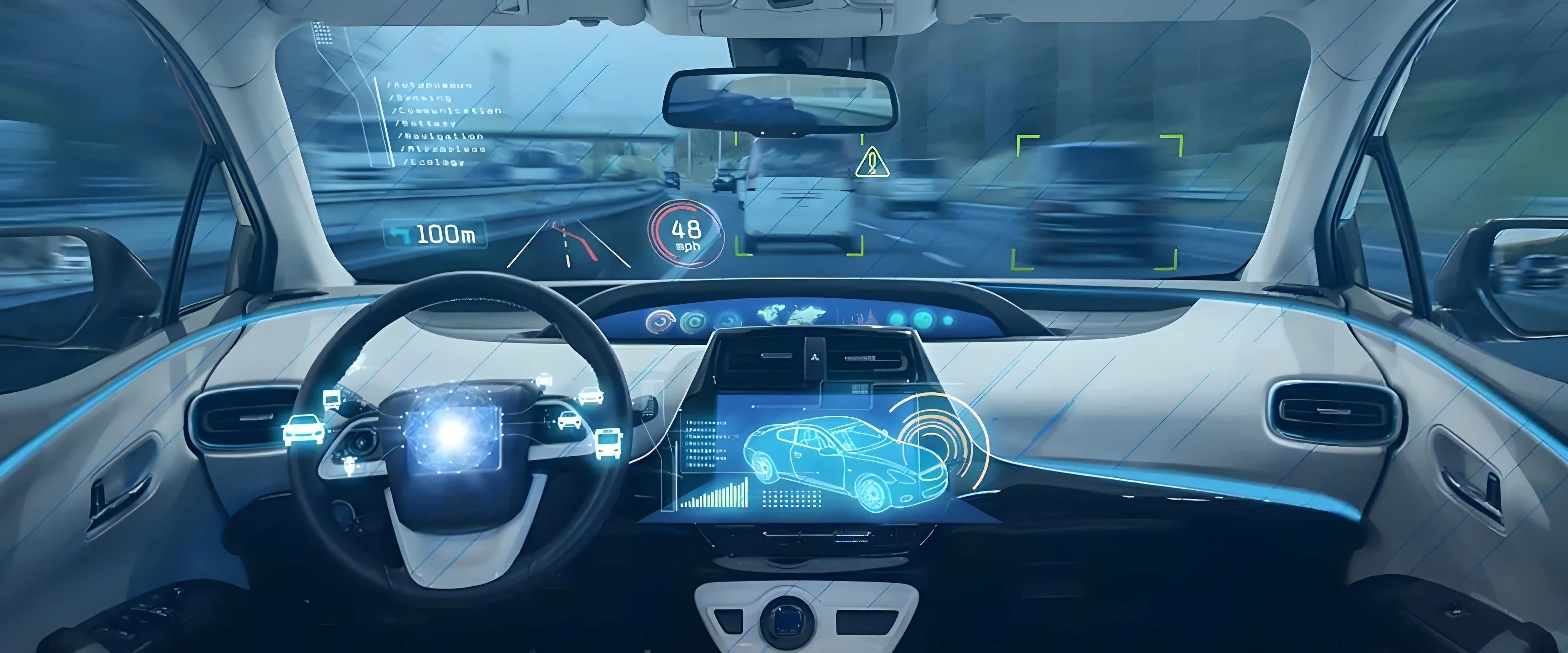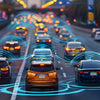The Role of TOF Sensors in Autonomous Driving for Precision and Safety

As autonomous driving technology evolves, depth perception and real-time data processing are crucial for ensuring safe and efficient operation. These technologies allow autonomous systems to sense and understand their surroundings, enabling quick, precise responses that are essential for driving safety. With the continuous advancements in artificial intelligence and sensor technologies, depth perception is emerging as one of the core technologies enabling vehicle intelligence in autonomous driving.
The 10-meter TOF sensor with advanced Time-of-Flight (TOF) technology significantly enhances the safety and stability of autonomous driving systems. This sensor offers high-precision environmental perception, helping autonomous vehicles accurately measure distances between objects in complex environments. Whether navigating urban roads, rugged terrains, or other challenging conditions, the TOF sensor provides accurate depth data, enabling real-time monitoring of the environment and obstacle avoidance, ensuring safety for autonomous vehicles.
What is Autonomous Driving?
Autonomous driving refers to using advanced technology to allow vehicles to drive autonomously without human intervention. It leverages a combination of sensors, cameras, LiDAR, radar, and AI algorithms to perceive and understand the environment, perform real-time decision-making, and operate the vehicle without human input. The goal is to reduce human error, increase driving efficiency, and eventually create fully autonomous vehicles.
The Role of TOF Sensors in Autonomous Driving
As autonomous driving technology matures, depth perception and real-time data processing are crucial in enabling vehicles to navigate safely and efficiently. The 10-meter TOF sensor is at the forefront of improving the accuracy and responsiveness of autonomous systems by providing high-precision depth information.
High-Precision Environmental Perception
The TOF sensor offers a working range of up to 10 meters, ensuring that it can precisely measure distances between objects and the sensor. In complex environments like urban roads or rugged terrains, the TOF sensor generates high-quality depth images, allowing for real-time monitoring. This ensures that potential obstacles are detected and avoided, reducing collision risks and ensuring driving safety in all conditions.
Seamless Integration with AI Algorithms
The TOF sensor integrates seamlessly with AI algorithms and real-time data processing systems, providing accurate depth information in real time. This allows autonomous vehicles to detect obstacles, pedestrians, and dynamic objects quickly, making split-second decisions to ensure safe driving even at high speeds or in complex urban environments.
Benefits of TOF Sensors in Autonomous Driving
TOF sensors offer several advantages, making them an essential component in the evolution of autonomous driving technology:
-
Accurate Environmental Modeling and Obstacle Detection TOF sensors create high-precision 3D models of the surrounding environment, aiding in obstacle detection. Whether on urban roads or rough terrains, TOF sensors help autonomous systems detect both static and dynamic obstacles, ensuring timely path adjustments and avoiding collisions.
-
Efficient Path Planning and Dynamic Obstacle Avoidance By capturing real-time depth data, TOF sensors enable autonomous vehicles to plan their route more accurately, avoiding obstacles and adapting to dynamic changes in the environment, such as pedestrians crossing or other vehicles stopping unexpectedly.
-
Low Latency and Real-Time Performance TOF sensors offer low-latency data, crucial for real-time decision-making. This quick data processing is essential in high-speed environments where fast reactions are needed to avoid accidents or navigate obstacles.
-
All-Weather Stability Unlike traditional sensors that rely on ambient light, TOF sensors work effectively in all lighting and weather conditions. Whether in bright sunlight, heavy rain, or fog, the TOF sensor ensures that autonomous vehicles can perceive their environment accurately, regardless of external conditions.
-
Reduced Complexity in Multi-Sensor Fusion Traditional autonomous systems rely on multiple sensors to gather environmental data, but TOF sensors provide accurate depth data independently, reducing the need for complex multi-sensor fusion. This not only simplifies system design but also lowers costs and complexity.
-
Optimized Perception in Complex Environments TOF sensors excel at recognizing the shape, size, and location of various objects in dense environments, such as parking lots or busy streets. They help ensure safe driving in high-density areas by providing accurate target tracking and recognition.
High-Efficiency Depth Perception Technology
One of the standout features of the TOF sensor is its ultra-high precision depth perception. The sensor can accurately measure distances in various environmental conditions, ensuring autonomous vehicles maintain reliable perception even in complex outdoor environments like direct sunlight, rain, or snow. This capability is essential for ensuring safe driving in a variety of scenarios.
Real-Time Data Processing and Smart Algorithm Integration
The TOF sensor works seamlessly with AI algorithms to provide real-time data to the vehicle. This integration helps the autonomous system identify obstacles, pedestrians, and other dynamic objects, making quick, accurate decisions that improve safety. Whether navigating busy streets or highways, the TOF sensor supports fast data processing for safe driving.
Ensuring Safe Driving
Safety is a primary concern in autonomous driving, and the TOF sensor addresses this by offering real-time monitoring of the vehicle’s environment. It provides precise depth data to help the vehicle detect and avoid potential hazards, ensuring the safety of passengers and pedestrians alike.
Adaptability to Complex Environments
Autonomous vehicles must navigate a variety of environments, from city streets to rural roads and highways. The TOF sensor is designed to adapt to these different scenarios, offering accurate depth data in urban, rural, or highway settings. This flexibility helps ensure that the vehicle can make accurate driving decisions in any environment.
Conclusion
As autonomous driving technology continues to evolve, depth perception systems like the TOF sensor will play a critical role in improving safety and efficiency. With its precise environmental perception, low-latency real-time data processing, and adaptability to complex environments, the TOF sensor is a vital tool for advancing autonomous driving technology. As TOF technology continues to evolve, it will enable autonomous systems to handle increasingly complex driving environments, paving the way for safer, more efficient autonomous vehicles worldwide.
Okulo ™ C1 Precision RGB-Depth Imaging Camera: Cutting-Edge Visuals, State-Of-The-Art IToF Technology, And Seamless Hardware Integration

After-sales Service: Our professional technical support team specializes in TOF camera technology and is always ready to assist you. If you encounter any issues during the usage of your product after purchase or have any questions about TOF technology, feel free to contact us at any time. We are committed to providing high-quality after-sales service to ensure a smooth and worry-free user experience, allowing you to feel confident and satisfied both with your purchase and during product use.
-
Posted in
C1 Precision







